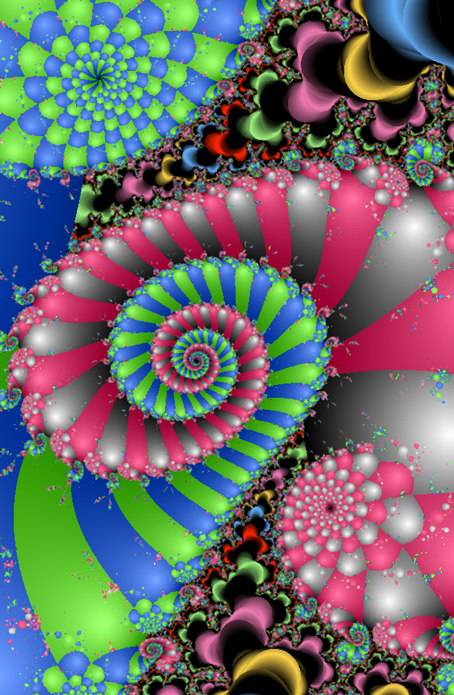
Lecture 7
Fractals

1. Here is an interactive tree fractal that we have already seen (January 16 lecture) - as you might recall, the "best" tree is obtained if we choose the ratio of the consecutive branches to be 1/Golden Ratio.
2.An interactive page where you can explore 5 fractals: Koch snowflake, Dragon curve, a tree fractal depicted in the textbook, a "crystal" also seen in the textbook, and the Hilbert curve.
3. A gallery of beautiful fractals - some are home made, some are scooped from the web: these are related to the Julia sets (associated with some special rearrangements of the points in the plane which are neither similarities nor isometries). Details explained in class.
(a) Here is the basic Mandelbrot fractal.
(b) We start with a another picture of the Julia fractal. First we zoom in once. We see a "caterpillar". Here is what happens if we zoom in a bit around one of the legs of the "caterpillar". We zoom in more. And more. And once again for the last time. We see that the "legs" continue to pop up, smaller and smaller.
(c) Some beautifull fractals; it is math that generates them.
For the Sierpinski gasket and Menger sponge go to the Animation Gallery.
© Sasho Kalajdzievski